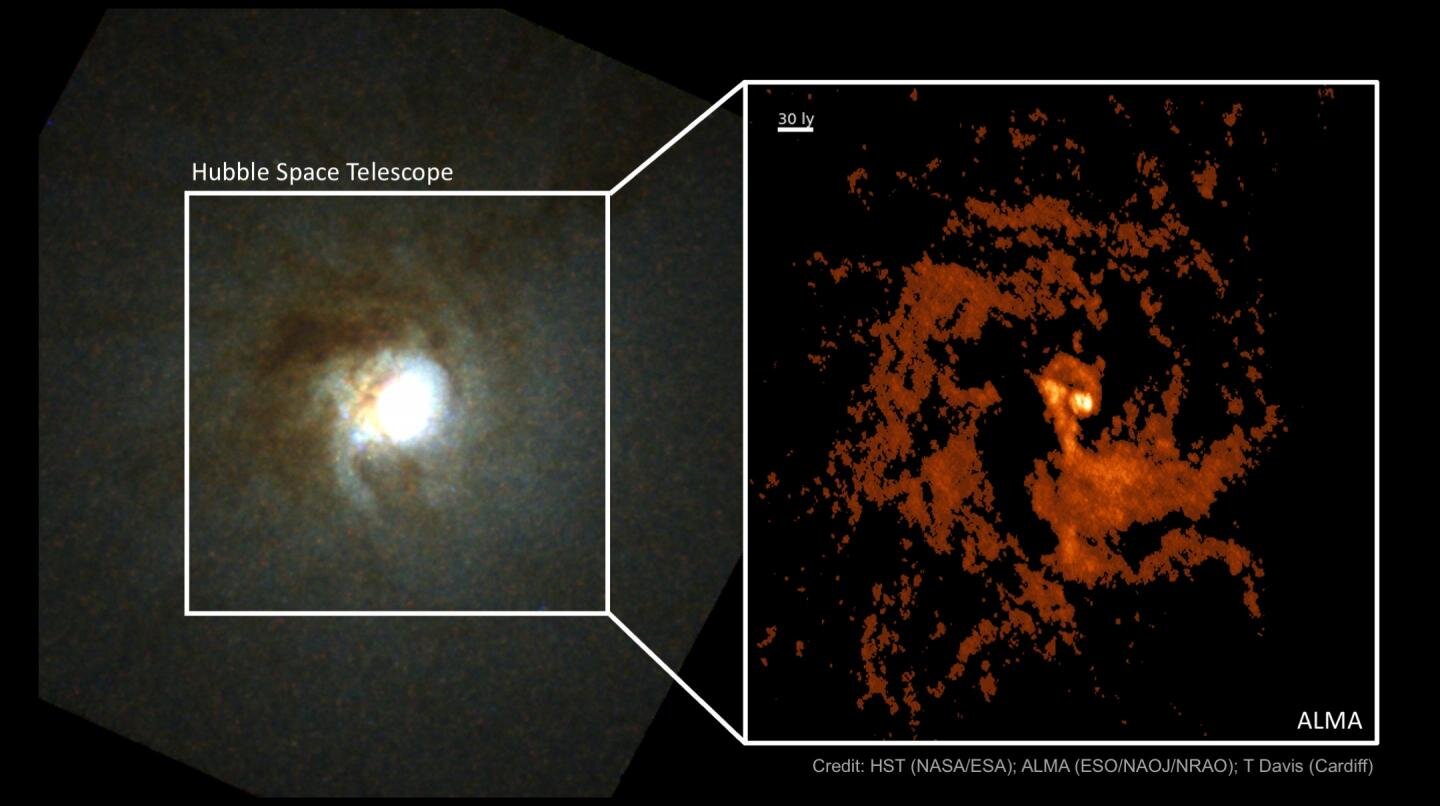Scientists aren't sure if supermassive black holes were formed under extreme conditions soon
- If the first option were correct,supermassive black holes would be born with extremely large masses—hundreds of thousands or millions of times more massive than our Sun—and would have a fixed minimum size.
- If the second appearance were correct,then supermassive black holes would start out relatively small. Their mass was about 100 times the mass of our Sun in this case, and began to grow over time, feeding on the stars and gas clouds located around them.
Astronomers have long sought to find supermassive black holes with the smallest mass. They are the missing links necessary to decipher the problem of the origin of SMBH.
In a study published today, the teamled by Cardiff, announced that it had discovered one of the smallest SMBH particles ever observed in the center of a nearby galaxy, which would weigh a million times less than the mass of the Sun. This supermassive black hole is located in the galaxy NGC 404 - "Ghost of Mirach". It received this name because of its proximity to a very bright star called Mirach, which casts its shadow on the galaxy.
Results were obtained using a newtechniques using a complex of radio telescopes located in the Chilean Atacama desert. He who observes electromagnetic radiation with a millimeter and a submillimeter wavelength is called ALMA. It is used to study light from some of the coldest objects in the universe.
 "On the left is a color composite imageHubble Space Telescope at the center of the "Ghost of Mirach". Shown at right is a new ALMA image of the same region, showing the distribution of cold, dense gas swirling around this center of this object in detail. Credit: Cardiff University.
"On the left is a color composite imageHubble Space Telescope at the center of the "Ghost of Mirach". Shown at right is a new ALMA image of the same region, showing the distribution of cold, dense gas swirling around this center of this object in detail. Credit: Cardiff University.
The supermassive black hole in the galaxy in Ghost of the World has mass within the range predicted by the “direct collapse” models, scientists say.
The researchers also noted that at present thisa black hole is active and swallows gas. This means that some of the most extreme “direct collapse” models that produce only very massive SMBHs may not be true.
This in itself is not enough tofinally determine the difference between the “original” picture and the “outright collapse”. First, we need to analyze all the statistics. But this is a huge step in the right direction.
Dr Tim Davies from the School of Physics and Astronomy at Cardiff University
Black holes are objects that collapsed under the influence of gravity, leaving behind themselves small but incredibly dense areas of space from which nothing can escape, not even light.
A supermassive black hole is the largest type of black hole, which can be hundreds of thousands, if not billions, more than the mass of the sun.
It is believed that almost all large galaxies, such as the Milky Way, contain such a black hole located in its center.
Supermassive black holes have also been discoveredin very distant galaxies, as they appeared just a few hundred million years after the big bang. This suggests that at least some of them could become massive in a very short time, which is difficult to explain in accordance with the models of the formation and evolution of galaxies.
All black holes grow when they absorbgas clouds destroy stars that run the risk of being too close to them, but some have a more active life than others. Therefore, the search for the smallest of them in nearby galaxies can help scientists understand how supermassive black holes appear.
In its study, an international teamused completely new methods to get closer to the heart of a small neighboring galaxy called NGC404 than ever before, allowing them to observe the swirling gas clouds that surrounded the supermassive black hole at its center.
The ALMA telescope allowed the team to see gas clouds in the very heart of the galaxy, making it one of the highest resolution maps ever made.
The ability to observe this galaxy with suchhigh resolution allowed the team to overcome decades of conflicting results and uncover the true nature of supermassive black holes in the center of the galaxy.
Read also
Look at the huge “wall” of hundreds of thousands of galaxies behind the Milky Way
Comet NEOWISE is visible in Russia. Where to see her, where to look and how to take a photo
In September, a dangerous asteroid will fly near the Earth. The minimum distance will be less than to the moon